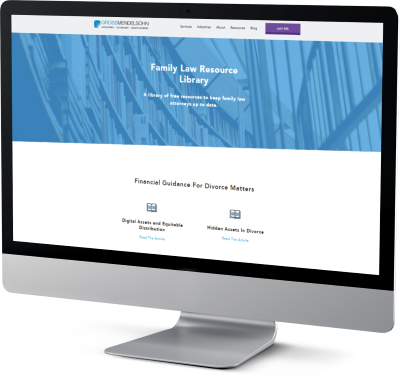For a couple going through a divorce, there are many things to plan for. If there are children involved, custody issues can become extremely contentious. Spouses have been known to use their children as bargaining chips to try to “win” during the divorce. But what if one of the “children” in the marriage is a business? What happens when that business is used to try to “win”?
When one spouse owns a business, that business ownership can present many different opportunities for proactive “divorce planning.” One type of opportunity is so common that divorce professionals have a cynical name for it: Sudden Income Deficit Syndrome (SIDS).
This “syndrome” can present in a few different ways.
1. The business is now supposedly in trouble
In an effort to lower the value of the business and/or lower their income for support purposes, a business owner might posit that their business is in severe trouble, even if it’s not entirely true.
Has the business owner been very vocal recently, explaining all the reasons why the business is now in trouble after keeping their spouse in the dark about such matters throughout their entire marriage? Is the business owner being sincere about these issues or, as Shakespeare wrote, “the lady doth protest too much, methinks.”
Another thing to examine is the timing of the decline. Is the timing of the deceases in revenue right around the time that one party moved out or filed for divorce? Did this supposed decline start soon after the couple got back together after an initial separation?
Any of these issues could point to the owner trying to set up a rationale for a decrease in the value of the business, their income or both.
Our article, 6 Questions to Ask a Forensic Accountant About a Business-Owning Spouse, explains how a business owner might use a business in a scheme to hide assets.
2. The business is now paying personal expenses
Another way to reduce the “income” from the business is if the business starts to pay the owner’s personal expenses. By absorbing these expenses, the business appears to be earning less money, which would impact its valuation and potentially the owner’s income for support purposes.
Have there been any significant changes in the expenses of the business? Is the business paying for the owner’s litigation costs associated with the divorce? What about costs associated with a new residence?
Our article, Guidance for Divorce Attorneys: How Business-Owning Spouses May Manipulate Income, goes into more detail on this.
3. The owner is reluctant to turn over financial information or allow a business valuation
If the business owner is trying to claim a decrease in income that doesn’t really exist, they are certainly not going to want to turn over financial information or allow for a business valuation that might easily disprove this claim. Unless they have altered documents and the accounting records (which is not unheard of), the corporate and personal bank statements, credit card statements and tax records are going to tell the actual story of the business and their income.
4. There have been significant changes to the owner’s income
I have seen instances where business owners have taken steps to reduce their income generated from the business. As a business owner, they frequently control their own compensation, which can allow them to manipulate their earnings.
Have they traditionally taken distributions from the company, but suddenly stopped? Has the cash balance in the business increased as a result of the lack of distributions?
It’s also possible that the owner may have made changes to their income over the past couple of years as part of their “planning.” If that’s the case, has there been a change in their lifestyle during this time period? Have their spending habits changed at all? Have they continued to contribute to their retirement accounts, college savings accounts and other investment vehicles?
In a recent case I worked on, the business owner had reported flow-through distributions from their business that averaged $250,000 during the two years prior to the parties’ separation. In the year they separated, the owner’s distributions decreased to approximately $140,000. During this same time period, the business’s cash balance increased by approximately $175,000. I was able to successfully argue that the income available to the owner should not be based on the amount of distributions available to the owner, as he was able to manipulate his distributions.
We present another case study about manipulation of income in our article, Divorce and Income Determination: Forensic Accounting to the Rescue.
Need Help?
If you believe your client’s spouse has developed Sudden Income Deficit Syndrome, the only cure might be to hire a forensic accountant who has the expertise and experience to detect these inconsistencies and uncover the truth about the business owner’s financial situation.
Contact us online or call us at 800.899.4623.


